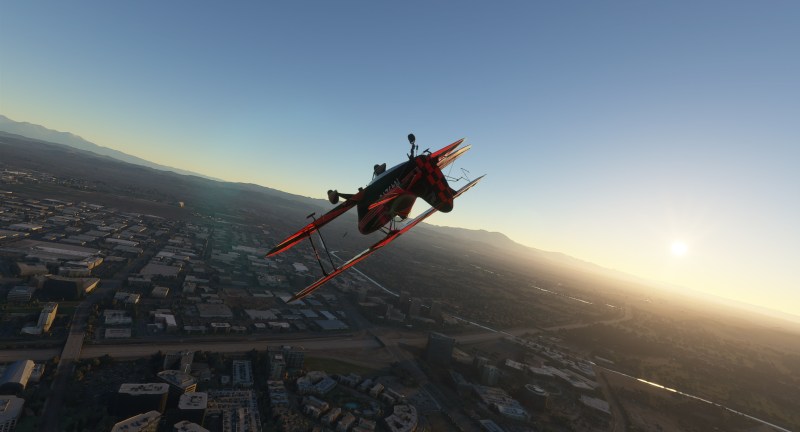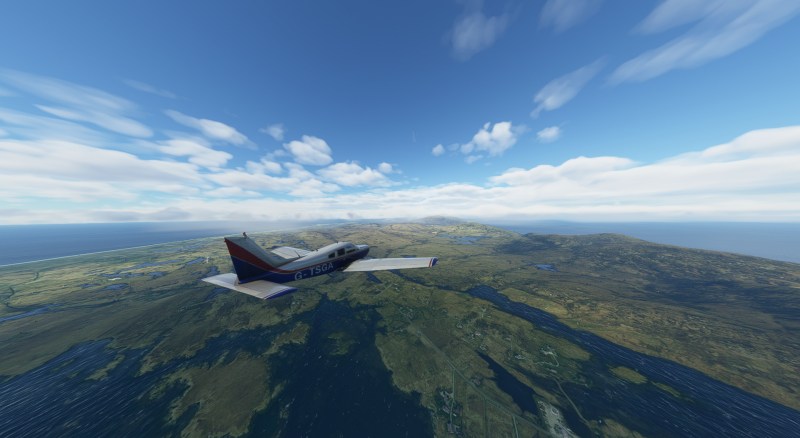In the half-year that Microsoft Flight Simulator has been on the market thus far, it has received a deluge of praise, but also a notable amount of criticism from some the more core members of its community. The sim has its strengths, like its breathtaking visuals and a considerable amount of content. But Microsoft Flight Simulator also has a number of faults that mostly have to do with broken features, surprising omissions, and game-breaking bugs. This is especially true of the latest update, Sim Update 3, which fixed a lot of issues but has now also caused a lot of performance problems for many players.
This latest misstep from development studio Asobo has some fans asking questions like: “What’s going on behind the scenes?” and “When are we going to get updates that fix more than they break?”
In my opinion, some of the reactions have been more on the side of melodrama. But, to a degree, a lot of the complaints are still justified. While Microsoft Flight Simulator is a great sim and has an ocean’s worth of content stuffed inside of it, the surrounding atmosphere has been undeniably turbulent. But, how bad is it really?
Update anxiety
Let’s start with the point that seems to ironically be both the source and the solution to a lot of the sim’s problems: updates. Asobo has done a stellar job at improving and building upon the sim since launch. Updates have been rolling out regularly every few weeks, from small patches to huge upgrades that overhaul parts of the sim’s world and also the mechanics. Microsoft Flight Simulator is already more refined, detailed and even has a bit more content than it did just half a year ago. Yet, it’s also inherited some issues along the way.
While fans clamor for every new update, so much so that there’s hysteria if one should be delayed, there’s also a subset of folks who look forward with hesitation. That’s because, more often than not, the sim’s updates have fixed some issues while introducing entirely new ones. We’ve seen stuff like cockpits take control of themselves, clouds looking like sandpaper, live weather being highly inaccurate, entire portions of the world being turned into wormholes, and, now lately, mass degradation of performance even on high-powered systems. It seems like just about every aspect of the sim has been negatively affected by an update at some point or another thus far.
On one hand, Asobo has done a great job at being very transparent about its acknowledgment of these issues. Every week there’s a development update posted to the sim’s official site, and in it includes a weekly refresh of the Feedback Snapshot — a collection of popular bugs, issues, and missing features that have been cataloged by the community. In this document, Asobo communicates if a particular query is being worked on, and if it is, when it can be expected to be addressed. All of these efforts to make the sim’s development more transparent are commendable. It’s quite unique for a AAA project such as this to have such an exchange (this is typically seen mostly among indie studios). But, one key factor isn’t as transparent: why updates keep creating new issues.
For every acknowledgment of a new problem, Asobo has never really stated what causes them. This is true of even the latest issue: the aforementioned performance degradation. The studio has acknowledged the problem and stated that it’s being investigated and will be fixed “ASAP.” However, the team has yet to come out and say what caused it in the first place. And likely when a fix is released, it still won’t say what happened. One can argue that the developer doesn’t really have to go into detail — more or less true, to an extent. But, seeing that Asobo has already set such a high precedent in terms of transparency, it only makes the lack of explanation all the more obvious. Especially since this keeps happening.
Repeating days
As alluded to earlier, this whole situation basically become a cycle. Some core Microsoft Flight Simulator fans often get excited about a new update, and then disappointed upon its release. Issues are almost always introduced. In fact, anytime an update rolls out, a subsequent thread on Reddit and the sim’s official forums is started collecting whatever bug findings come up from the community. This really shouldn’t be happening, or at least not so often.
While Asobo may not come out and explicitly say what’s going on, I can at least try to make an educated guess.
Microsoft Flight Simulator is huge — absolutely massive in terms of scale for any game. No flight simulator has included such a profound amount of content out of the box. And the consistent updates and enhancements only add to the already huge content pool every few months. There are many moving parts to this project. In a way, it’s almost no wonder why some bugs and issues go unnoticed until a new version of the sim is released. That said, however, certain issues like the performance problems are too widespread to have simply gone undetected. So, what’s the real solution? Well, Asobo seems to have already figured that out: slowing down.
Speed brakes
The studio recently announced that its next two major updates (following the upcoming release of World Update 4) are to be rolled into one: Sim Update 4 and World Update 5. The reason given? Asobo says it’s “to reduce the number of builds and conduct more testing.” That line right there is incredibly important.
This explanation, as simple as it may seem, actually tells a pretty big story. For one, it shows that Asobo is acknowledging that the sim truly is huge. And so, in order to focus on improvements more efficiently, the team is now changing its approach. Rather than running to improve the sim in small chunks, it’s holding off in order to release more at once. And verify that everything is working beforehand. Additionally, Asobo will work alongside third parties in the next updates, likely to make sure their products are also not adversely affected by any of the new changes.
So far, this is the closest we’ve gotten to an admission from the studio that there is an annoyingly consistent introduction of new issues. And if this new development tactic proves successful, it wouldn’t be surprising if Asobo continues to use this approach in the future.
All things considered, Microsoft Flight Simulator, though flawed, continues to be an amazing experience. A few months back, I wrote my article on judging if the sim possibly was living up to tall promises made before launch — it’s not quite there yet. But that’s the important thing; it may not be at that level right now, but week by week it is getting to that point. It has a 10-year long development cycle ahead of it, so the sim you’re flying in right now is bound to look and feel very different in the near future. All Asobo has to do is to get a firm grip on the update bugs, and make sure that future enhancements do just that: enhance.
Is the criticism fair? Of course. But, considering the sheer size of this project and all the little details and intricacies that are going on underneath, I personally don’t see the need to drop the proverbial ban hammer on the studio just like that. If the combined update set to launch later this year, along with the promises of performance improvements thanks to the upcoming Xbox version of the sim all truly do make this experience better, then that will set a new precedent for a truly refined “live” simulator experience in the years to come.












Published: Mar 26, 2021 07:00 am